On the trail of iconic Parisian scientists
Bill Dennison ·Following a three day meeting on transdisciplinary research, I had a day to explore Paris in search of the trails of three of my scientific icons. My eighteenth century science icon from Paris is Antoine-Laurent de Lavoisier (1743-1794); my nineteenth century icon is Louis Pasteur (1822-1895); and my twentieth century icon is Marie Curie (1867-1934).
Lavoisier: The trail of Antoine Lavoisier was the most distant and therefore difficult trail to detect, but I was fortunate to have the benefit of a wonderful blog written by my Integration and Application Network colleague, Bill Nuttle. His blog titled "Walking Tour: Antoine Lavoisier escapes an explosive situation on the streets of the Marais" provided me with an insight into the Paris of Lavoisier's time. Bill's blog tells the story of Lavoisier's encounter with an angry mob during the heated days of the French Revolution. I also visited the Musee des Arts et Metiers which has an exhibit in which Lavoisier's laboratory equipment is displayed.
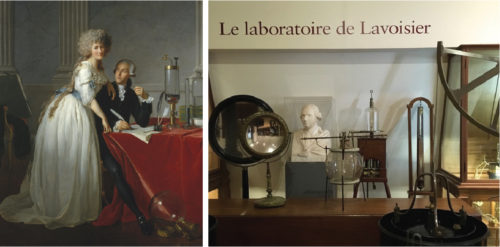
The reason that Antoine Lavoisier is one of my scientific icons is that he led a scientific revolution of thought and also contributed many practical science applications. Lavoisier debunked the prevailing theory of phlogiston, and showed that oxygen (which he named) was responsible for combustion. Lavoisier helped develop the metric system, and also began a list and nomenclature of atomic elements.
The Lavoisier laboratory equipment on display at the Musee des Arts et Metiers was impeccably constructed, helped by his nobility and role as a tax collector which allowed him to hire skilled artisans. Of course, his nobility was his undoing, as Lavoisier was executed during the French Revolution. Bill Nuttle's walking tour took me through the Marais district of Paris, including the beautiful Place des Vorges, a model of urban renewal. The tour took me to where Lavoisier had his laboratory, as part of the Arsenal. It also took me to site of the Bastille where Lavoisier lost his head, promoting the mathematician Joseph-Louis Lagrange to comment "It took them only a moment to remove his head, but it will take more than a hundred years to produce another like it."
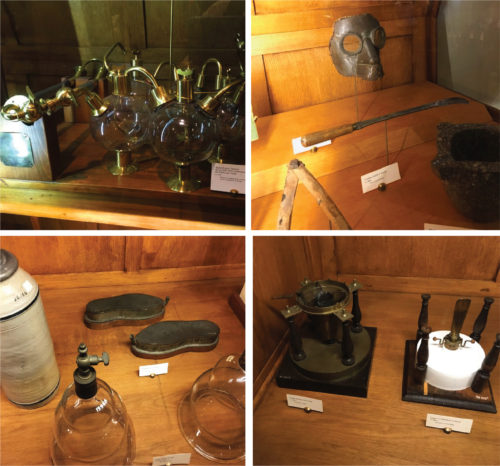
Pasteur: The trail of Louis Pasteur is easy to find, as one of his legacies is the famous Pasteur Institute. I was unable to visit the museum, as it was closed on the weekend, but I still made my way to the Pasteur stop on the Paris metro and walked to the entrance of the institute. I saw the shops on the street named for Pasteur and his statue in front of the institute. And when I was logging into my iPad to get directions for my next stop in front of the Pasteur Institute, their website popped up with a Louis Pasteur quote that was eerily relevant today. The quote read "Young people, do not let yourself be stigmatized and sterile, do not be discouraged by the sadness of certain hours that pass over a nation."
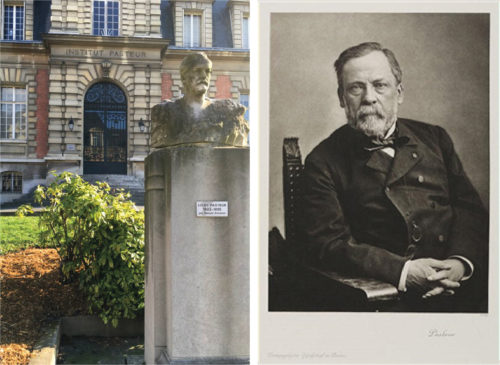
Discovering this quote served to confirm the iconic status I have for Louis Pasteur. Pasteur is the paragon of combining basic and applied research, so much so that "Pasteur's Quadrant" (Stokes, 1997) is a key concept I use in teaching, as exemplified in a recent 'Science for Environmental Management' class blog. Briefly, Pasteur's quadrant represents the intersection of curiosity-inspired research and practical, use-inspired research. He said "There are no such things as applied sciences, only applications of science". Pasteur essentially invented the field of microbiology, debunking the theory of spontaneous generation while also creating vaccines for rabies and anthrax. He studied fermentation which led to the development of the Pasteurization process still used in the production of milk and beer.
Curie: The trail of Marie Curie is still fresh, with the Curie Institute standing as testament to her impact. The Curie Institute has an excellent, small museum at the site of her office and laboratory. It also contains photographs and video footage of Marie Curie and replicas of key documents. Replica documents are displayed because the originals are still too radioactive to safely display.
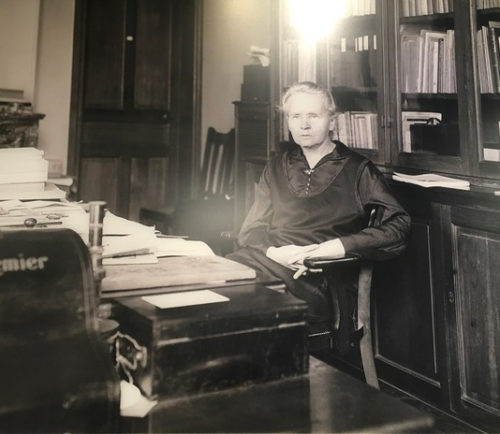
Marie Sklodowska Curie is an icon because of her incredible accomplishments in basic research which earned her two Noble Prizes, in physics (1903) and in chemistry (1911), and her practical applications like the development of X-rays for medical diagnosis and radiation for cancer treatment. Marie, a Polish immigrant, attended the University of Paris and shared her first Nobel Prize with her French husband Pierre Curie (1859-1906). Marie and Pierre had two girls, Irene Joliot-Curie (1897-1956) who also received a Nobel Prize for Chemistry with her husband Frederic Joliot-Curie in 1935, and Eve Labouisse-Curie (1904-2007) who wrote a book about her famous mother. So Marie Curie was connected to five Nobel Prizes, and as a woman scientist was groundbreaking in a myriad of different ways.

On my way to the Curie Institute, I walked by the Pantheon, site of Foucault's famous pendulum and the crypts for famous Parisians. Both Marie and Pierre are interned in the Pantheon, and Marie was the first woman who received this honor. I chose not to enter the Pantheon, as I was worried that they might remember me from when I was kicked out for having a 2 year old daughter riding my shoulders while delivering a stirring rendition of Baa-Baa Blacksheep in 1997.
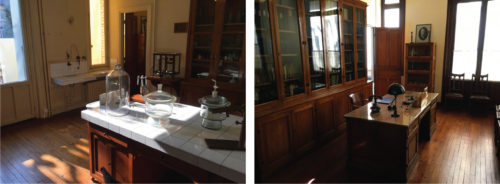
In tracking down these iconic scientists, I walked by the Louvre and the Musee d'Orsay, two of the best art museums on the planet, but I have previously visited them and I felt that coming on the heels of a transdisciplinary research workshop, the inspiration from Antoine Lavoisier, Louis Pasteur and Marie Curie would be timely. I also took care crossing the streets of Paris, because I did not want to suffer the fate of Pierre Curie, who was killed by a horse-drawn wagon while crossing the street. I love that Paris publicly celebrates scientists, including the 72 names of scientists and engineers inscribed on the Eiffel Tower, which Bill Nuttle describes on a Facebook page: Eiffel's Paris -- an Engineer's Guides. And, of course, the streets of Paris offer wonderful aromas and sights, still serving as a cultural magnet for artists, authors and scientists.
About the author
Bill Dennison

Dr. Bill Dennison is a Professor of Marine Science and Vice President for Science Application at the University of Maryland Center for Environmental Science.

